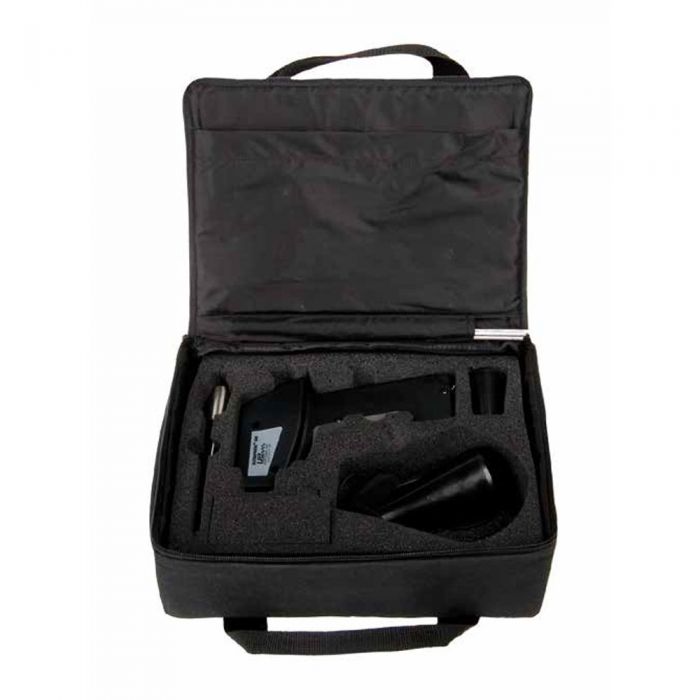U.E. Systems UP100SC Ultrasonic Leak Detection
$600Introduction to the U.E. Systems UP100SC The U.E. Systems UP100SC is a state-of-the-art ultrasonic leak detection tool, specifically engineered to identify leaks in compressed air systems, steam traps, and various other industrial equipment. This advanced device is renowned for its precision, reliability, and user-friendly design, making it a preferred choice among maintenance professionals. The UP100SC is equipped with cutting-edge technology that not only enhances its detection capabilities but also simplifies the process, ensuring that even those with minimal training can effectively utilize it. One of the key features of the U.E. Systems UP100SC is its ergonomic design, which ensures comfort during extended use. The device is lightweight and easy to handle, minimizing user fatigue. Additionally, its intuitive interface allows for straightforward operation, making it accessible to users of all skill levels. The UP100SC also boasts advanced technology that provides accurate leak detection, which is crucial for maintaining the operational efficiency of industrial systems and reducing energy costs. Leak detection is of paramount importance in various industries. In manufacturing, for instance, undetected leaks in compressed air systems can lead to significant energy losses and increased operational costs. Similarly, in the automotive industry, ensuring that all systems are leak-free is vital for maintaining vehicle performance and safety standards. The chemical processing industry also greatly benefits from precise leak detection, as it helps prevent hazardous leaks that could pose safety risks and environmental concerns. Overall, the U.E. Systems UP100SC serves as an indispensable tool for industries aiming to enhance efficiency and reduce energy expenditures. Its user-friendly design and advanced features make it an essential component of any maintenance toolkit. By investing in such reliable leak detection technology, industries can ensure optimal performance and sustainability of their operations. How to Use the UP100SC for Effective Leak Detection Utilizing the U.E. Systems UP100SC for ultrasonic leak detection involves a structured approach to ensure accuracy and efficiency. Begin with the initial setup by powering on the device and attaching the appropriate sensor. The headset should be connected to allow for clear audio feedback of ultrasonic signals. Once the device is operational, start by scanning the area or equipment. Hold the UP100SC approximately 1-2 inches away from the surface, moving it slowly to detect any variations in the ultrasonic frequencies. The sensitivity can be adjusted to filter out ambient noise, ensuring that only relevant signals are captured. Interpreting the ultrasonic signals is crucial. The device’s display will show varying levels of decibels indicating the intensity of the detected leak. A higher decibel reading usually points toward a more significant leak. To pinpoint the exact location, fine-tune the sensitivity and narrow down the search area. Visual and audio cues from the UP100SC will guide you to the source. Regular maintenance checks are essential for the longevity and accuracy of the UP100SC. Ensure that the sensor and headset connections are secure and free from damage. Periodic calibration of the device is recommended to maintain its precision. Calibration can be done using reference standards provided by the manufacturer. Integrating the UP100SC into a predictive maintenance program can vastly improve operational efficiency. By routinely scanning critical equipment, potential leaks can be detected and rectified before escalating into costly repairs or downtime. Documenting findings is essential. Use the built-in data logging feature to record decibel levels, locations, and other relevant details for future reference. When scanning different types of equipment such as valves, compressors, and pipes, adjust the device settings to match the specific requirements. For instance, scanning a high-pressure valve may require a different sensitivity setting compared to a low-pressure pipe. Best practices include methodical sweeping of the area and cross-referencing audio and visual signals. If issues arise, such as inconsistent readings, refer to the troubleshooting guide provided by U.E. Systems. Common problems can often be resolved by re-calibrating the device or checking for sensor obstructions. Utilizing real-world examples, the UP100SC has proven effective in industries ranging from manufacturing to HVAC, showcasing its versatility and reliability in detecting leaks.

